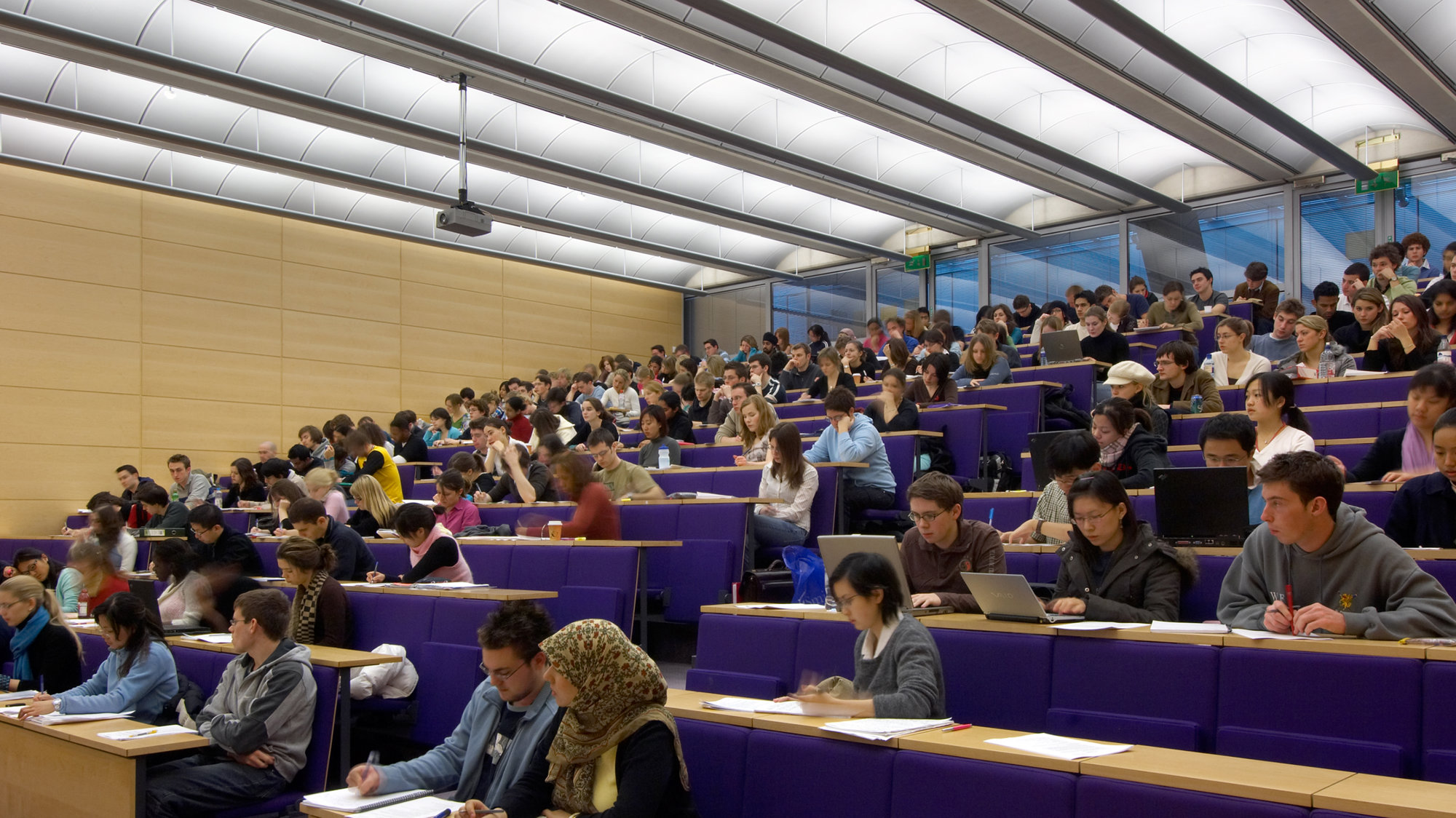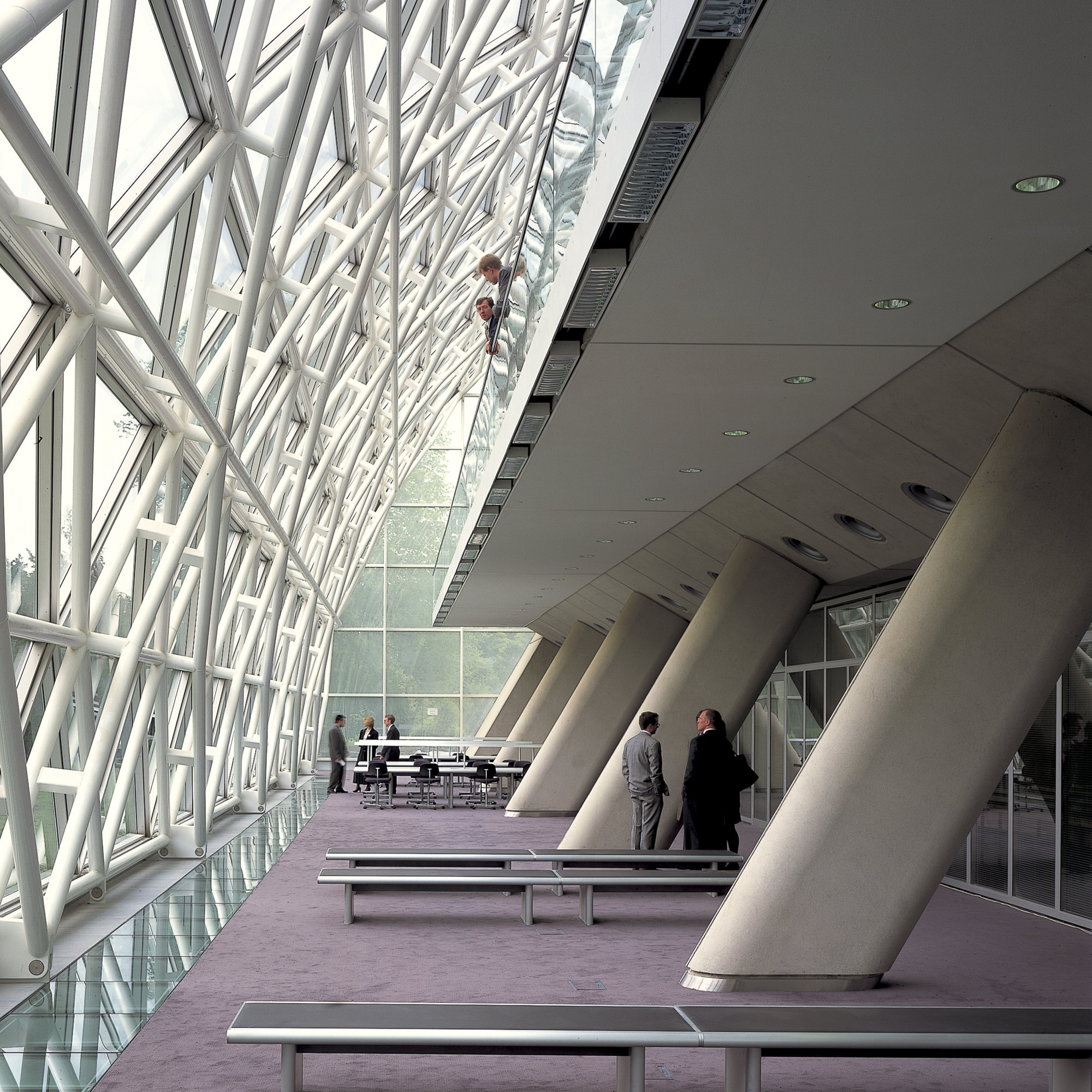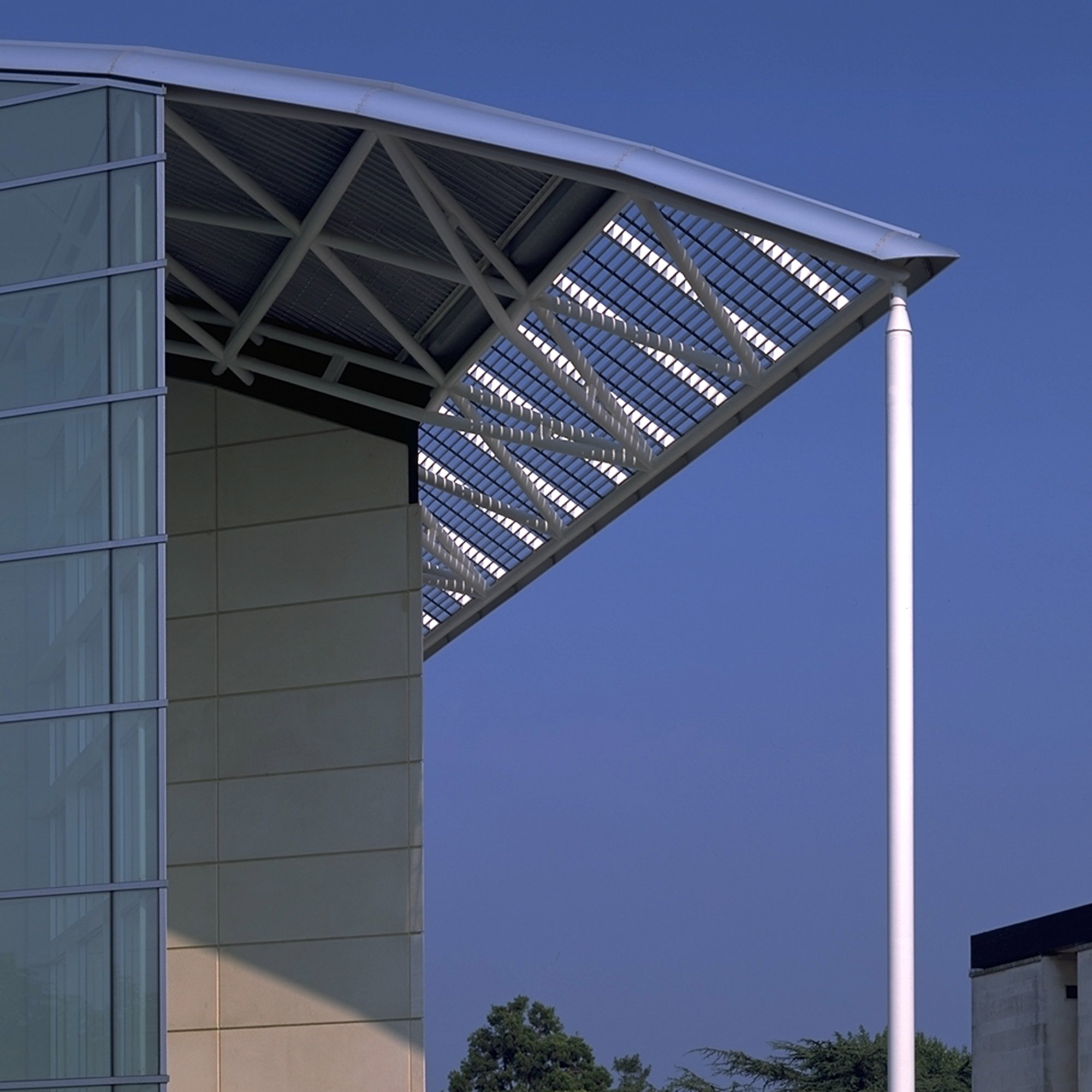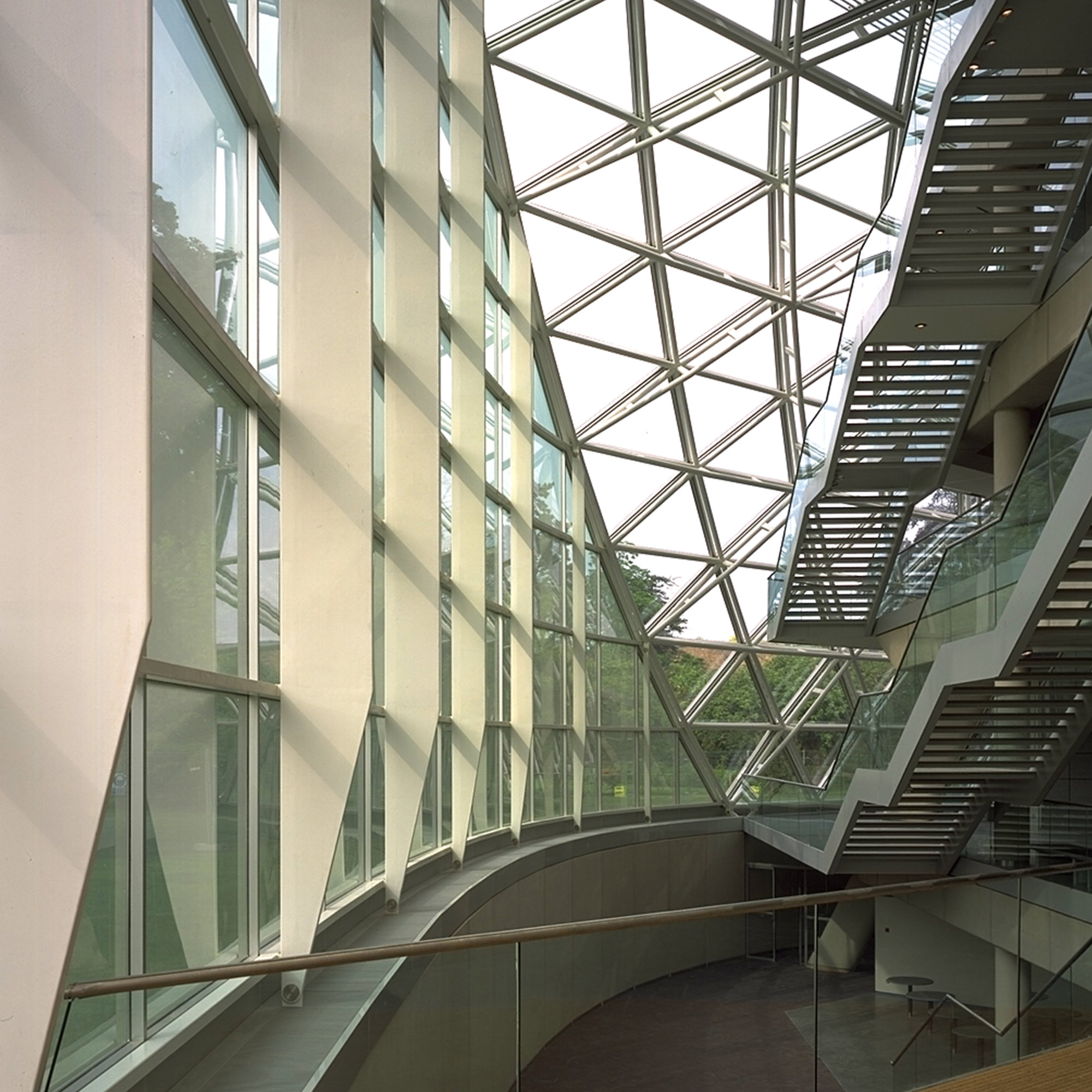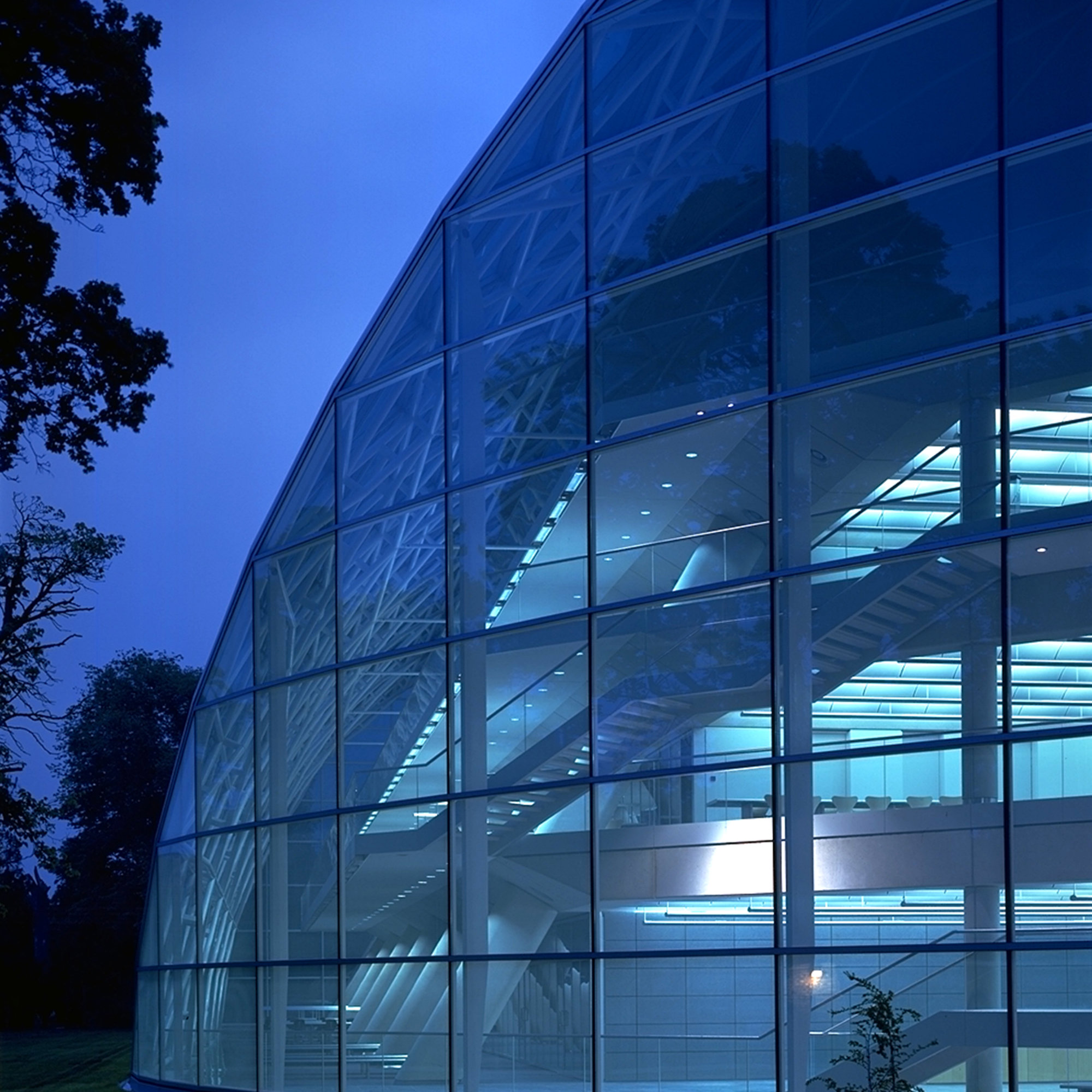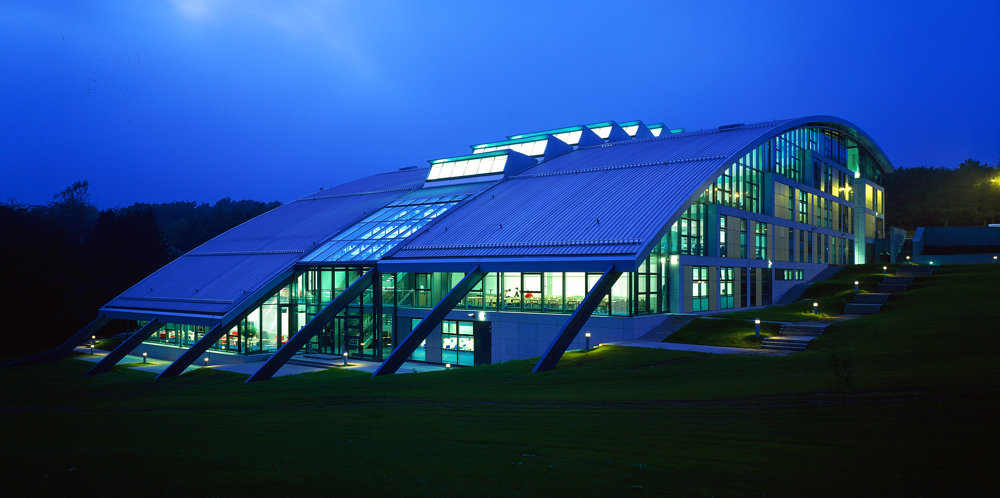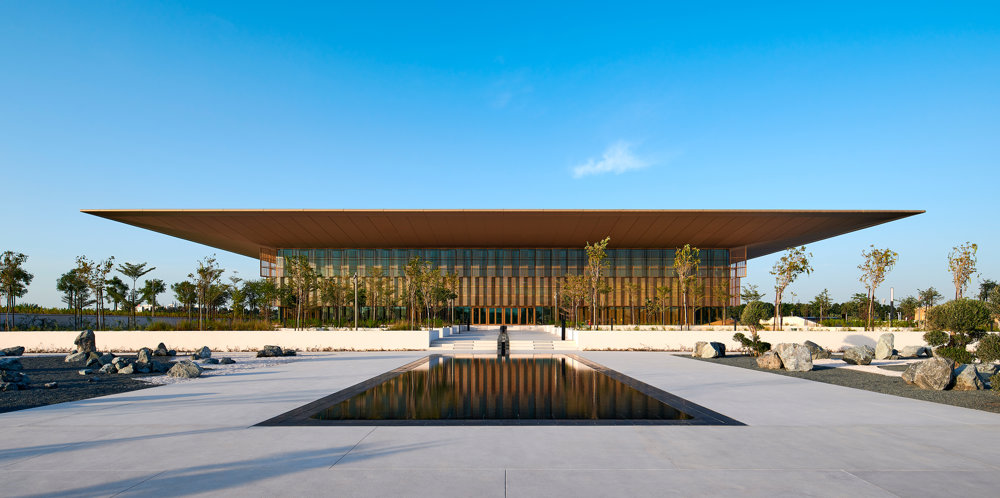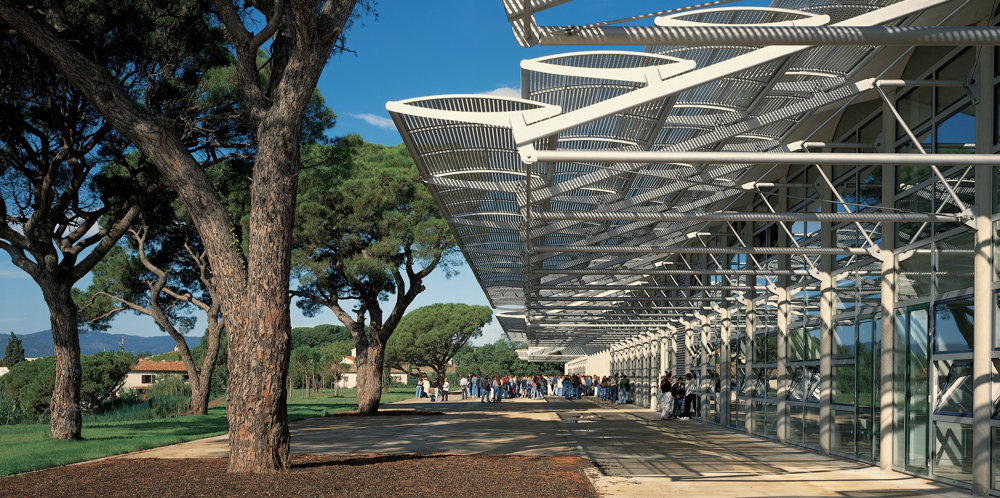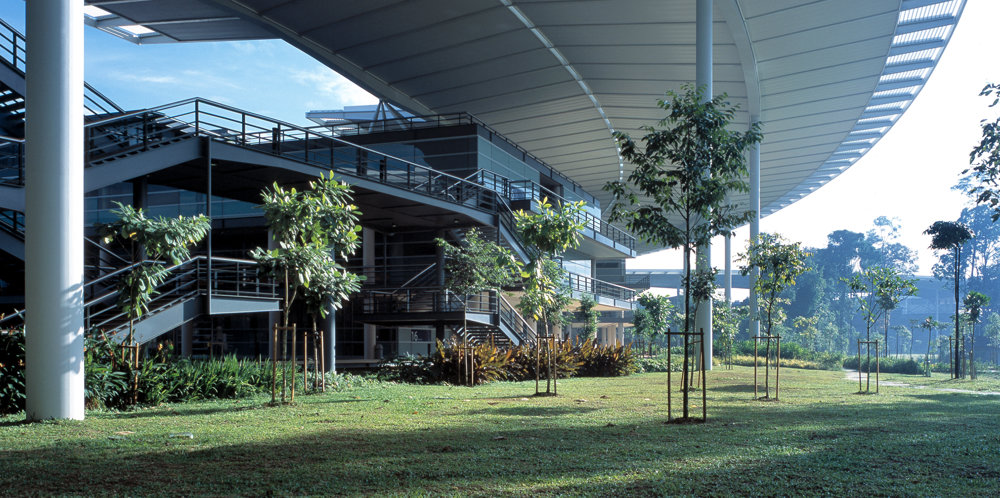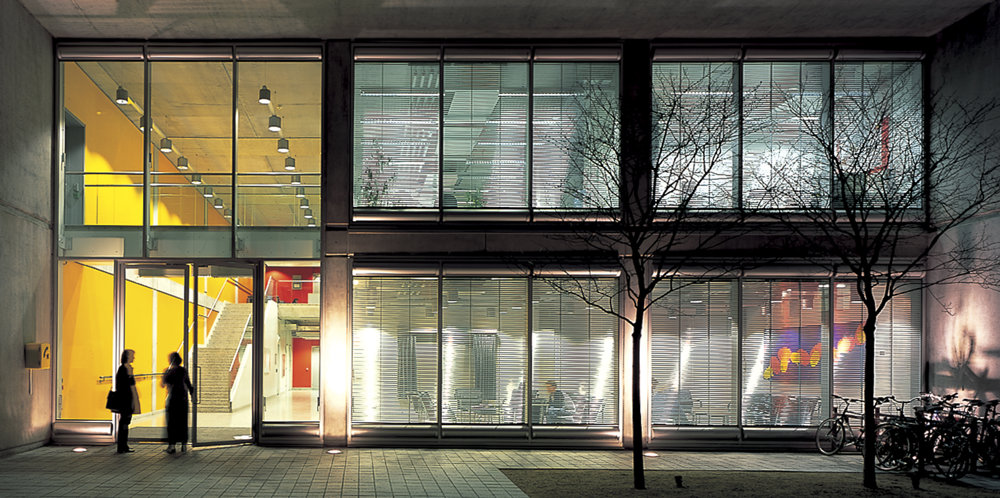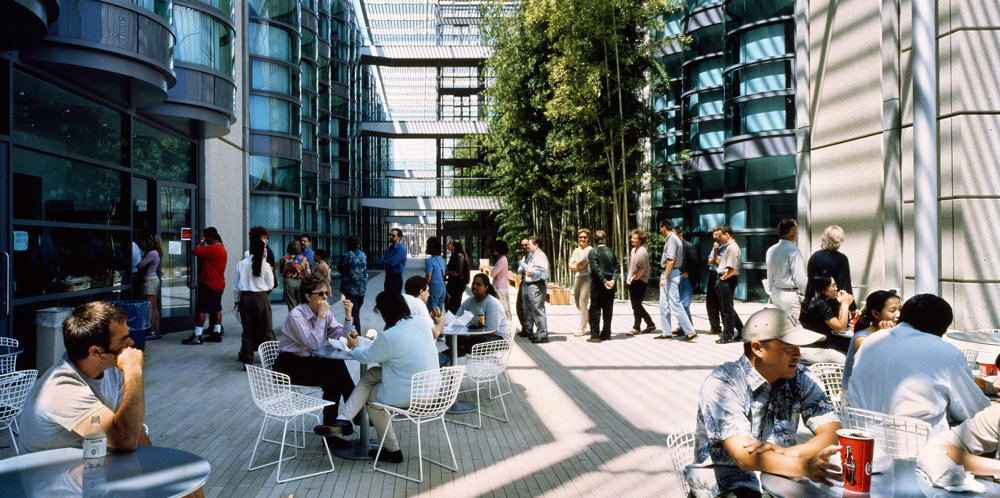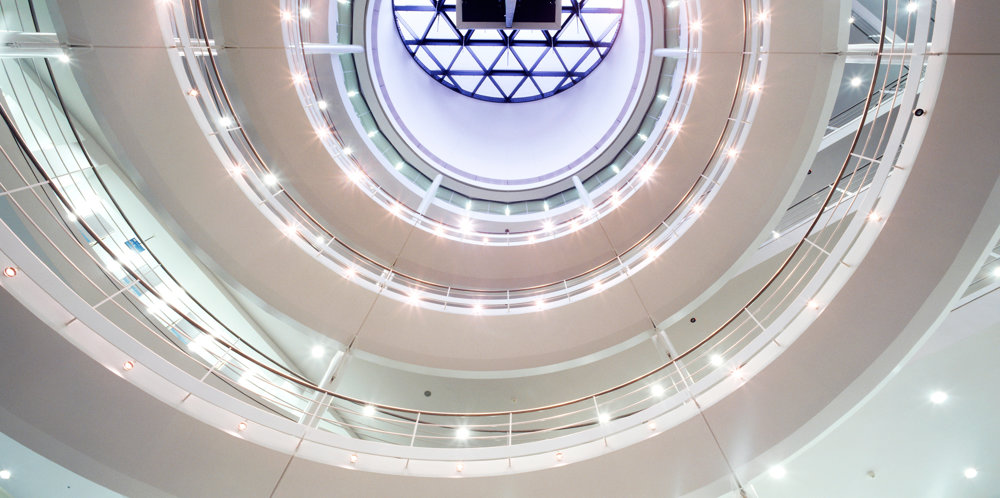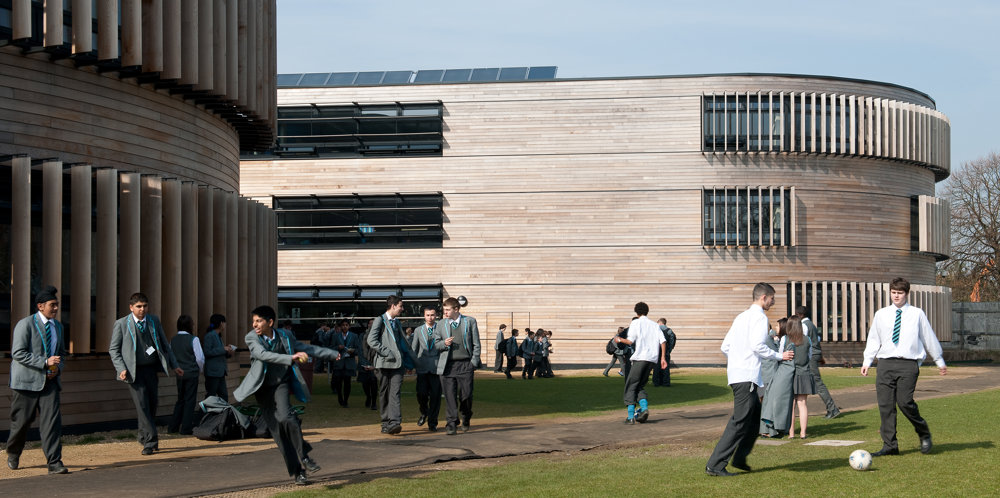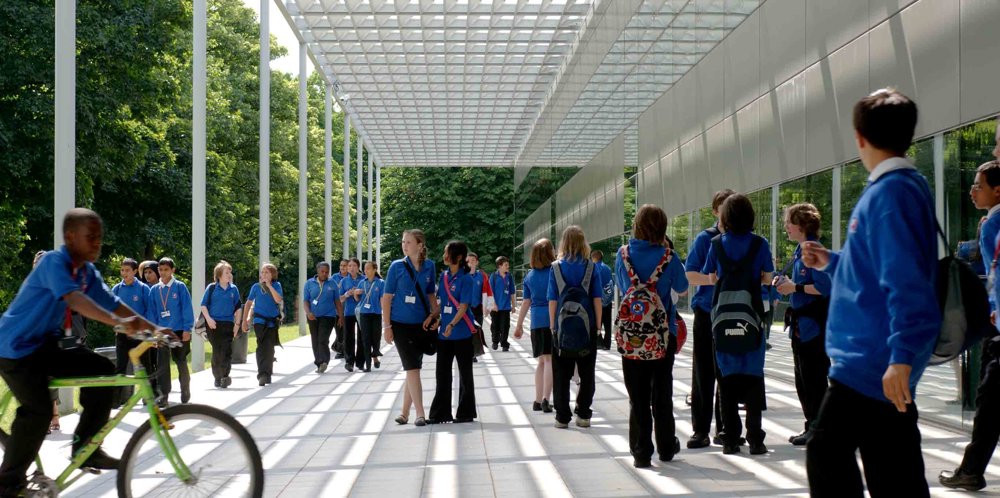View the 360 tour
Cambridge University has the largest law school in Britain, with 800 undergraduates and 200 postgraduate students. Combining its own sense of tradition with a forward-looking commitment to change, the Faculty of Law required a new building that would provide state-of-the-art facilities for teaching and research, comprising the Squire Law Library, five auditoriums, seminar rooms, common rooms and administrative offices.
Located at the heart of the University’s Sidgwick site, the focus of humanities education at Cambridge, the building is surrounded by lawns and mature trees. This low density, green garden context is the essence of Cambridge. The challenge was to preserve this natural setting and to minimise the building’s apparent size. The response was to create a rectangular plan cut on the diagonal to follow the geometry of the neighbouring History Faculty and pedestrian routes across the site. The building has a relatively small footprint, yet provides 8,500 square metres of accommodation without exceeding four storeys. This was achieved by digging the auditoria below ground, while the curving glass of the north facade helps the building to recede visually.
The Faculty of Law building has also set new standards for energy efficiency on the Cambridge campus, deploying a number of passive and active strategies. Natural lighting is used to dramatic effect, especially in the library, which occupies the upper three terraced floors and enjoys uninterrupted views of the gardens, while the full-height atrium that forms the focus of the building draws daylight into the lower levels. The building’s partially buried structure and exposed concrete frame combine to give it high thermal mass, making it slow to respond to outside temperature changes. Together with high insulation values, this allows the use of mechanically assisted natural ventilation throughout − only the lecture theatres require seasonal cooling. A lighting management system reduces energy consumption, while heat recovery coils, linked to the air extract, reclaim waste heat. Interestingly, the building’s environmental performance was put to the test during its first summer, one of the hottest on record. Happily, it performed very well.









